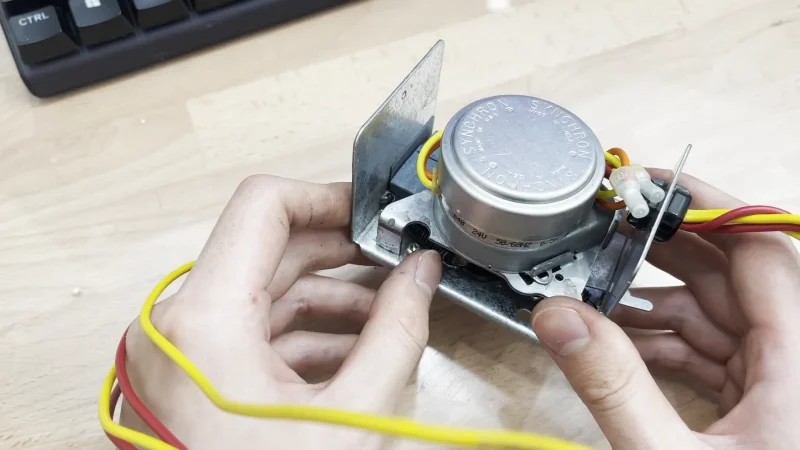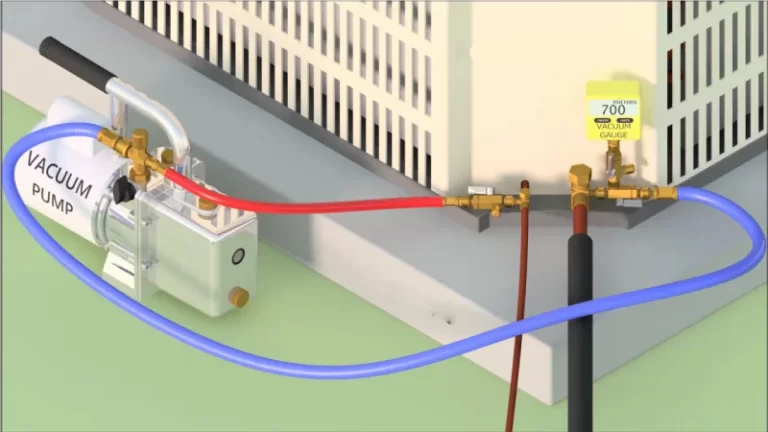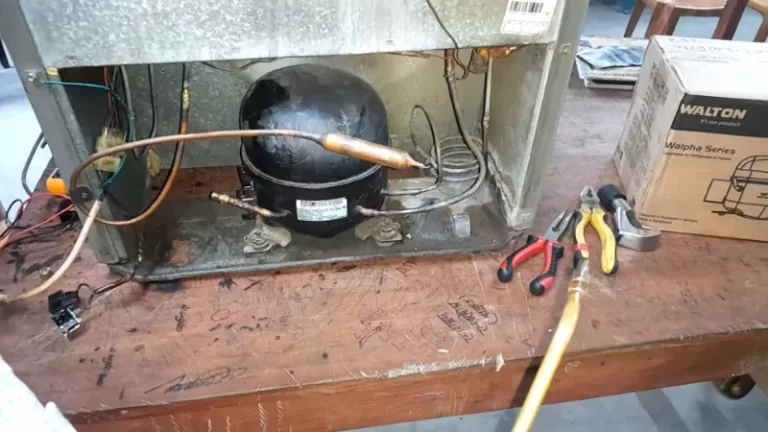Honeywell Zone Closed Valve Stuck – Causes and Fixes

A Honeywell zone valve is an important component of a home’s heating system. It is responsible for regulating the flow of hot water or steam to different areas of the home.
When a Honeywell zone valve becomes stuck in the closed position, it can prevent heat from reaching certain areas of the home. This can cause problems with the overall operation of the heating system.
Understanding the potential causes and solutions for a stuck closed Honeywell zone valve is important. It helps maintain the efficiency and effectiveness of the heating system.
You'll Learn About
Causes Of A Stuck Closed Honeywell Zone Valve
There are several potential causes that can lead to a stuck closed Honeywell zone valve. Some possible causes include:
Debris Or Corrosion Within The Valve
Over time, debris or corrosion can build up within the valve. This can cause it to become stuck in the closed position. This can be caused by a variety of factors, including hard water buildup, rust, or other contaminants.
Problems With The Power Supply Or Control Wiring
If the power supply or control wiring to the valve is damaged or malfunctioning, it can prevent the valve from opening properly. This can be caused by loose connections, frayed wires, or other issues.
Malfunctioning Thermostat Or Other Control Components
The thermostat and other control components play a critical role in regulating the operation of the zone valve. If these components are not functioning properly, it can cause the valve to become stuck in the closed position. This can be caused by a variety of issues, including faulty wiring, a malfunctioning thermostat, or other problems.
| Problem | Possible Causes | Solutions |
|---|---|---|
| Valve Sticks Open | Wiring issue | Check and repair or replace wiring |
| Bad thermostat | Replace thermostat | |
| Bad valve assembly | Replace valve assembly | |
| Low batteries in thermostat | Replace batteries | |
| Valve Does Not Close | Short in wiring between valve and thermostat | Check and repair or replace wiring |
| Bad thermostat | Replace thermostat | |
| Bad valve assembly | Replace valve assembly | |
| Mouse damage in wiring | Check and repair or replace wiring |
Causes Of A Stuck Closed Honeywell Zone Valve
Symptoms Of A Stuck Closed Honeywell Zone Valve
If a Honeywell zone valve becomes stuck in the closed position, there are several symptoms that may be noticeable in the home. Some common symptoms of a stuck closed zone valve include:
Lack of heat in certain areas of the home
If a zone valve is stuck closed, it can prevent heat from reaching certain areas of the home. This can lead to cold spots or a lack of heat in those areas.
Inability to purge the heating system
If the zone valve is stuck closed, it can also prevent air or water from flowing through the system. This makes it difficult or impossible to purge the system.
Inconsistent Or Inadequate Heating Performance
A stuck closed zone valve can also lead to inconsistent or inadequate heating performance overall. This can disrupt the balance of heat distribution within the home. It can result in some areas being too hot while others are too cold. It can also cause overall poor heating performance.
How To Diagnose And Troubleshoot A Stuck Closed Honeywell Zone Valve
There are several steps that can be taken to diagnose and troubleshoot a stuck closed Honeywell zone valve. Some possible steps include:
Checking The Valve And Control Wiring For Visible Signs Of Damage Or Problems
One of the first steps in troubleshooting a stuck closed zone valve is to visually inspect the valve and control wiring. Look for any visible signs of damage or problems. This can include checking for loose connections, frayed wires, or other issues.
Testing The Valve And Control Components With A Multimeter
A multimeter can be used to test the valve and control components for proper operation. This can help to identify any problems with the valve, control wiring, or other components. These problems may be causing the valve to become stuck in the closed position.
Checking The Thermostat And Other Control Components For Proper Operation
It is also important to check the thermostat and other control components to ensure that they are functioning properly. This can help to identify any problems with the control system. These problems may be causing the valve to become stuck in the closed position.
Overall, it is important to follow a systematic troubleshooting approach. This will help accurately diagnose the issue and identify the best solution. If the problem persists or you are unable to identify the cause, it is recommended to seek assistance from a professional heating technician.
How to Fix Honeywell Zone Closed Valve Stuck?
Tools needed:
- Screwdrivers
- Fresh batteries
- Wire cutters
- Multimeter (to check for shorts in wiring)
- Replacement thermostat (if needed)
- Replacement valve assembly (if needed)
Step-by-Step Guide to Unstick a Honeywell 8043 Zone Valve:
- Begin by checking the batteries in your thermostat. Replace them with fresh batteries if they are low or dead.
- Next, disconnect one of the wires from the thermostat. If the valve closes, the thermostat is likely the problem and should be replaced.
- If the valve does not close, disconnect one of the yellow wires from the zone valve. If the valve closes, the issue is likely a shortage in the wiring between the valve and the thermostat.
- Check the wiring for any damage or mouse damage. If the wiring is damaged, it will need to be repaired or replaced.
- If the wiring is in good condition, the next step is to replace the thermostat wire.
- If the valve still does not close, it may be necessary to replace the valve assembly.
Note: If you are unsure about the diagnosis or repair, it’s best to contact a licensed professional. This will prevent further damage or safety issues.
Solutions For A Stuck Closed Honeywell Zone Valve
There are several solutions that can be pursued to address a stuck closed Honeywell zone valve. Some possible options include:
Cleaning Or Repairing The Valve If It Is Mechanically Stuck Or Damaged
If the valve is mechanically stuck or damaged, it may be possible to clean or repair it to restore proper operation. This can involve cleaning out any debris or corrosion within the valve. It may also involve making repairs to any damaged parts.
Replacing The Valve If It Is Beyond Repair Or Faulty
If the valve is beyond repair or faulty, it may be necessary to replace it. This will typically involve cutting out the old valve and soldering in a new one.
Repairing Or Replacing Control Wiring Or Components
If the issue is caused by damaged control wiring or other components, it may be necessary to repair or replace these parts. This will restore the proper operation of the valve. This may involve rewiring connections, replacing faulty components, or other repairs.
Ultimately, the best solution will depend on the specific cause of the issue and the condition of the valve and control components. If you are unsure about how to proceed, it is recommended to seek assistance from a professional heating technician. They can provide further guidance and ensure that the issue is properly addressed.
Should You Replace the Valve?
The fact that hot water is reaching the valve but not flowing past it suggests that the valve may not be fully opening. It may also be stuck in the closed position. Additionally, the fact that you were able to manually open the valve by compressing it with a C clamp supports this theory. The heat started working again a short time later.
It is possible that the valve may have simply become stuck or jammed. Loosening it up by manually opening it has temporarily resolved the issue. However, it is also possible that the valve is damaged and needs to be replaced.
It may be worth considering replacing it as a precautionary measure. This is especially true if the issue persists or occurs again after you reinstall the head. If you are unsure about how to proceed, it is always best to consult with a professional heating technician. They can provide further assistance and ensure that the issue is properly addressed.
Conclusion
A stuck closed Honeywell zone valve can cause problems with the operation of a home’s heating system. It can prevent heat from reaching certain areas of the home. This can lead to poor heating performance.
There are several potential causes of a stuck closed valve. These include debris or corrosion within the valve, problems with the power supply or control wiring, and malfunctioning thermostats or other control components.
To diagnose and troubleshoot the issue, it is important to check the valve and control components for visible signs of damage or problems. Test them with a multimeter and ensure that the thermostat and other control components are functioning properly.
Possible solutions include cleaning or repairing the valve, replacing the valve if it is beyond repair or faulty, and repairing or replacing any damaged control wiring or components. If the issue persists or is not easily resolved, it is recommended to seek professional assistance. This will ensure that the problem is properly addressed.
To help avoid future problems with the zone valve and heating system, it is important to perform regular preventive maintenance. This includes cleaning and checking the valve and control components. Address any issues that arise promptly.




